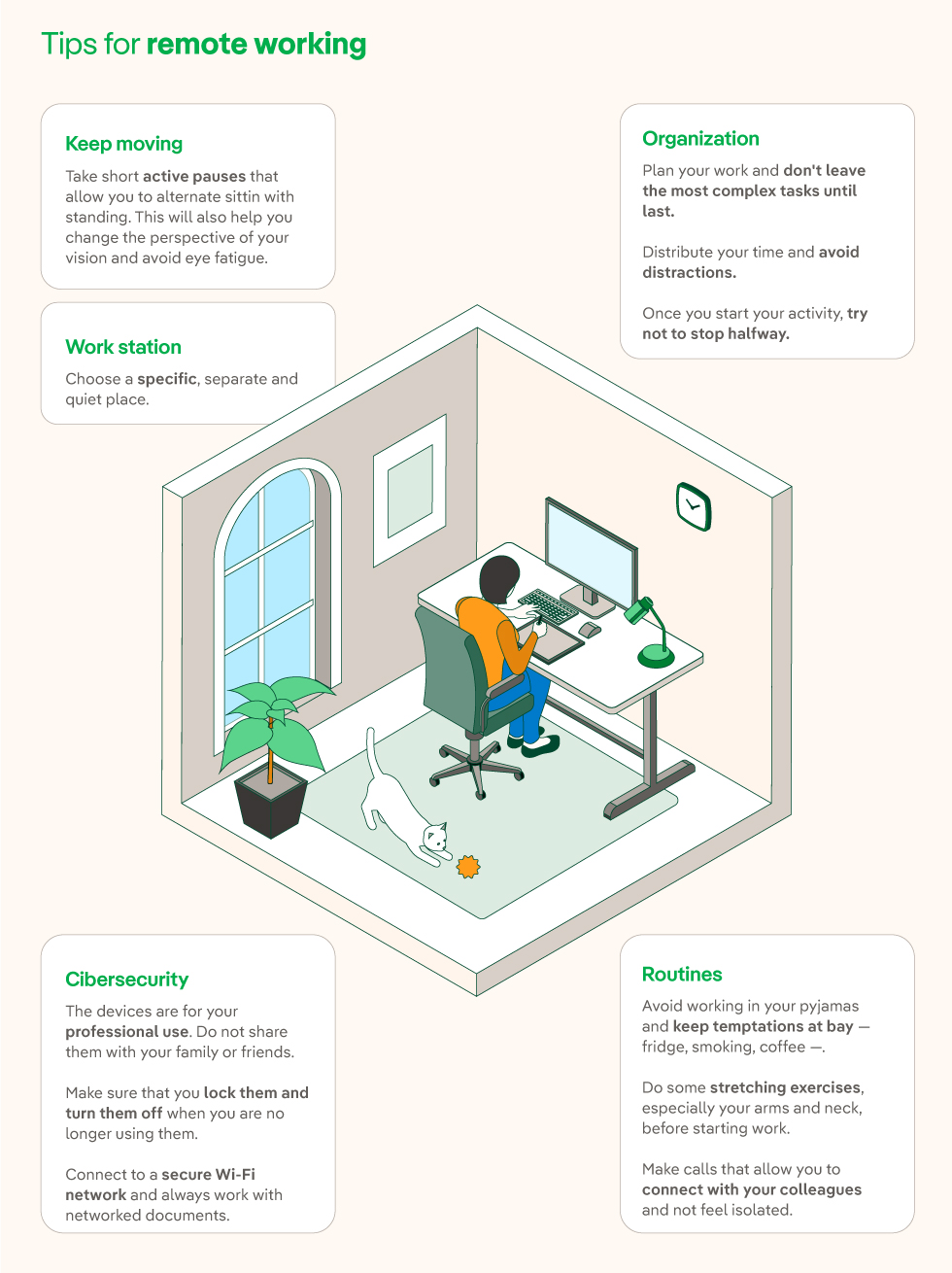Hướng Dẫn A potential benefit of telecommuting is that: ?
Thủ Thuật về A potential benefit of telecommuting is that: 2022
Hoàng Nhật Mai đang tìm kiếm từ khóa A potential benefit of telecommuting is that: được Update vào lúc : 2022-09-11 04:10:06 . Với phương châm chia sẻ Kinh Nghiệm về trong nội dung bài viết một cách Chi Tiết Mới Nhất. Nếu sau khi Read tài liệu vẫn ko hiểu thì hoàn toàn có thể lại Comments ở cuối bài để Ad lý giải và hướng dẫn lại nha.Nội dung chính
- ADVANTAGES AND DISADVANTAGES OF
TELECOMMUTINGTeleworking or how to balance family life and productivityWHAT IS TELECOMMUTING OR TELEWORKINGADVANTAGES OF TELEWORKINGDISADVANTAGES OF TELECOMMUTINGTIPS FOR DEALING WITH TELEWORKINGTELEWORKING TOOLSWhat are the benefits of telecommuting quizlet?What are two benefits of telecommuting?What is a benefit of telecommuting for an organization?
ADVANTAGES AND DISADVANTAGES OF TELECOMMUTING
Teleworking or how to balance family life and productivity
#society #employment #high performance
At first glance, remote working may seem to only have advantages: greater work-life balance, lower business costs and even increased productivity. But not all sectors or all professions are able to work in this way. In the era of coronavirus, we analyse this way of working, we share tips to get the most out of it and we recommend tools that will help you in the daily life.

The development of ICT has been instrumental in making remote working a perfectly viable option.
Remote working is not new, but the coronavirus crisis — which has confined millions of workers to their homes — has caused many people to discover it for the first time. It may seem easy to adapt to this way of working, but like almost everything in life it has its pros and cons. As to whether remote working is here to stay, only time will tell, but for the moment we can address a number of key points that will help you be comfortable and make the most of the situation.
WHAT IS TELECOMMUTING OR TELEWORKING
To find a definition for remote working, it is best to go to a reference body toàn thân such as the International Labor Organization (ILO). For the ILO, remote working is a form of work carried out remotely, that is, in a location away from a central office or from production facilities, with the help of ICT — Information and Communication Technology — which facilitates both physical separation and communication.
The development of ICT in recent years has been essential for making remote working a perfectly viable option for both companies and employees. The possible downsides to this way of working, such as the lack of communication or coordination, have been solved thanks to the multiple tools available on the market and aimed making remote working more efficient.
At this point, and although it may seem obvious, it should be remembered that remote working has its limitations and that not all companies or all professionals can currently do it. On the contrary, there are ideal professions for remote working: programmers, designers, community managers, editors, translators, teachers — the e-learning boom has made distance learning possible — consultants, illustrators, accountants, etc. Nor do all the countries in the world have the same level of access to ICT.
ADVANTAGES OF TELEWORKING
Remote working has a number of advantages for both employees and companies and society. Let's take a look some of them:
For employees:- It allows greater time flexibility and reduces stress.It facilitates conciliation between a worker's family and professional life.
- Cost reduction by minimising
office space and logistics.Increased productivity by reducing superfluous interactions between employees.
- Reduction in pollution as there are fewer trips by car and public transport.As the roads become less congested, there are fewer traffic accidents.

Which countries give the most relevance to the work-life balnce?
DISADVANTAGES OF TELECOMMUTING
All that glitters when we talk about remote working is not gold, and it also has a series of drawbacks for employees, companies and society. Here are some of them:
For employees:- A more sedentary
lifestyle and physical problems such as back pain can increase.It increases the risk of not disconnecting and working more hours than usual.
- Employee identification with the company can be reduced by increasing isolation.Performance monitoring becomes more complex from a distance.
- Reduction in the interpersonal relationships that are the basis of society.Increased social differences as there is a gap in access to ICT.
TIPS FOR DEALING WITH TELEWORKING
Adapting to remote working is not an easy task and depends on the personality of each individual. What first may seem affordable, can be a struggle as the days go by. For this reason, here are a few tips to get the most out of it:
Be disciplined and establish a routine with strict schedules and habits.
Create a tidy and comfortable space from which to work.
Separate work obligations from leisure. That is, disconnect a certain time.
Avoid a sedentary lifestyle. For example, every now and then get up and stretch your muscles.
Talk to the people you live with so they respect your workplace.
Contact your colleagues to avoid isolation and facilitate teamwork.

SEE INFOGRAPHIC: Tips for remote working [PDF] External link, opens in new window.
TELEWORKING TOOLS
As we mentioned previously, ICT is fundamental for carrying out remote work. Below, we list some of the tools that will make your tasks easier and will become essential in your daily life:
- Teams: collaborative work platform that, in its không lấy phí version, provides chats, video calls, 10 GB of team file storage, etc.Trello: management software that allows teams to organise and assign tasks, track project progress, and create work flows.Skype: its không lấy phí version allows video calls of up to 50
people. In addition, it also allows you to record them and share the screen with other users.Quip: a text editor that allows you to create, edit and share documents online. In addition, it includes a chat within the panel with which to make comments.Loomio: this app facilitates decision making. Users are invited to participate and a discussion topic is created and everyone can contribute their ideas and action
plans on the topic.Tinypulse: Using a system of weekly random surveys, this tool collects information about the mood of employees.
What are the benefits of telecommuting quizlet?
Larger labor pool.. Higher productivity.. Improved morale.. Reduced office-space costs..What are two benefits of telecommuting?
These benefits include:. Increased employee productivity.. Increased employee satisfaction.. Improved employee recruitment and retention.. A reduction in overall absenteeism.. A reduced need for office space and parking space.. An opportunity to recruit skilled workers from outside the area..What is a benefit of telecommuting for an organization?
The benefits of telecommuting (improved employee efficiency, schedule flexibility, increased time available for work, overhead reductions, improved employee retention and attraction, and program continuity) are desirable outcomes for any management process. Tải thêm tài liệu liên quan đến nội dung bài viết A potential benefit of telecommuting is that: